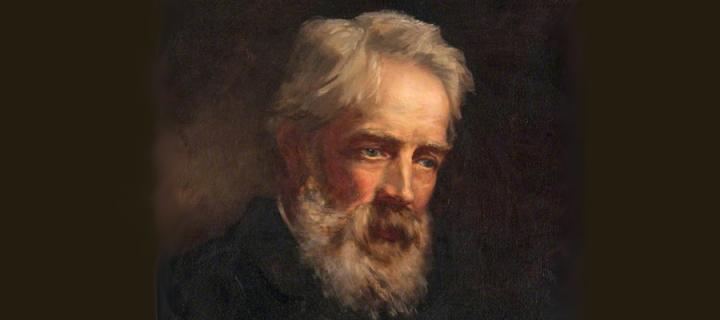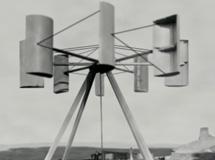James Blyth (1839 - 1906)
Scottish electrical engineer, and a pioneer in the field of electricity generation through wind power and his wind turbine.

Born in April 1839 in Marykirk, Kincardineshire, Blyth was educated at the local schools before winning a scholarship to the General Assembly Normal School in Edinburgh. From there, he enrolled at the University of Edinburgh, obtaining a Bachelor of Arts in 1861, before becoming a teacher of mathematics at Morrison's Academy in Crieff.
Blyth eventually completed his Master of Arts at the University in 1871.
Wind power

Blyth was then appointed Freeland Professor of Natural Philosophy at Anderson's College in 1880 (now the University of Strathclyde), where he began a research program on the use of wind power for electricity generation and storage.
This research culminated in the installation of a cloth-sailed, horizontal wind turbine (as opposed to the now more common vertical wind turbine) at his Marykirk holiday cottage in July 1887. Blyth's design was 33 ft in diameter and stored the electricity generated in 'accumulators', otherwise known as batteries.
After a lack of success offering his surplus electricity to the local village, whose residents branded electricity "the work of the devil", Blyth was able to install a larger, much-improved version of his wind turbine at the Montrose Lunatic Asylum, Infirmary and Dispensary, where it ran successfully for 30 years.
Renewable energy
In 1891 Blyth presented a paper to the Royal Society of Edinburgh espousing his belief in the benefits of renewable energy sources, particularly wind but also wave energy. Later that year he was awarded the Brisbane Gold Medal by the Royal Scottish Society of Arts for his work in producing electrical energy from wind.
Blyth received an honorary doctorate from the University of Glasgow in 1900 and died in 1906. After the turbine at Montrose Asylum was dismantled in 1914, there would not be another public utility wind turbine in Britain until 1951.

